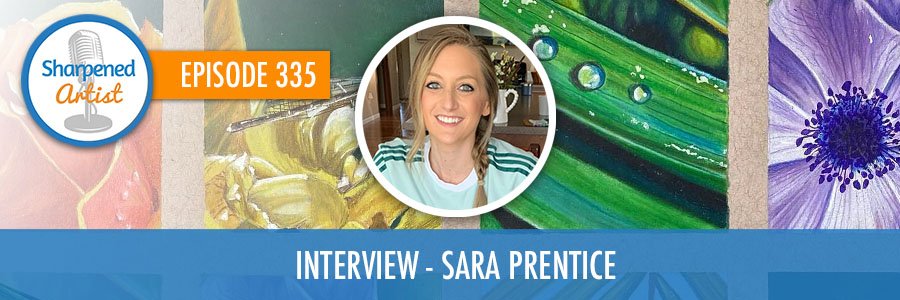Show Notes:
Season 2
336 - All Things Strathmore Paper
This week John and Barb are inviting back artist Sara Prentice to talk about Strathmore Paper.
Sara discusses some of the company history, differences in paper types, and how Strathmore was the first to bring the toned paper to market.
You’re bound to learn something new about paper and this company as you listen to the conversation today!
Strathmore Website: strathmoreartist.com
Strathmore on Instagram: @strathmoreart
Sara’s Instagram: @saraprenticeart
Questions for Strathmore, go to: https://www.strathmoreartist.com/contact.html
Links and references from the show:
If you ready to learn more about Strathmore, then sign up for their quarterly newletter:
https://www.strathmoreartist.com/artist-newsletter.html
Sara Prentice Podcast Interview
Sarah Becktel Podcast Interview
As always, you can reach out to the show if you’d like to offer any suggestions: podcast@sharpenedartist.com
For rough-cut, early-release, and ad-free video versions of the podcast, join the Member’s Circle.
The podcast is also supported by Amazon Music Unlimited. If you're looking for a new music streaming service, Amazon Music Unlimited will be perfect. It features 70 million songs and thousands of expert-programmed playlists and stations - all available ad-free!
So check it out today by going to getamazonmusic.com/sharp We thank Amazon Music Unlimited for their support of the podcast.
Artists Signature Chart (16-Page PDF E-book) - John’s List of 65 curated colors:
https://payhip.com/b/eP4cI/af60da3dce31c55
The special listener coupon code is “sharpart20” to get 20% off a single chart.
Other Resources for Artists
Ready for personal, tailored art mentoring? Check out the new Art Mentoring program and how you can get started for free!
>>>Join the Monthly Sharpener: a NEW online community for colored pencil artists!<<<
Stay sharp!



